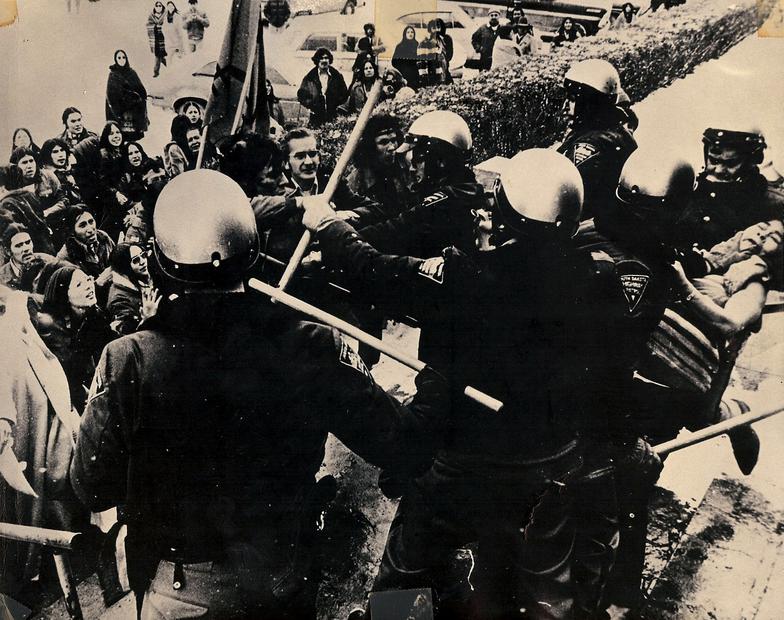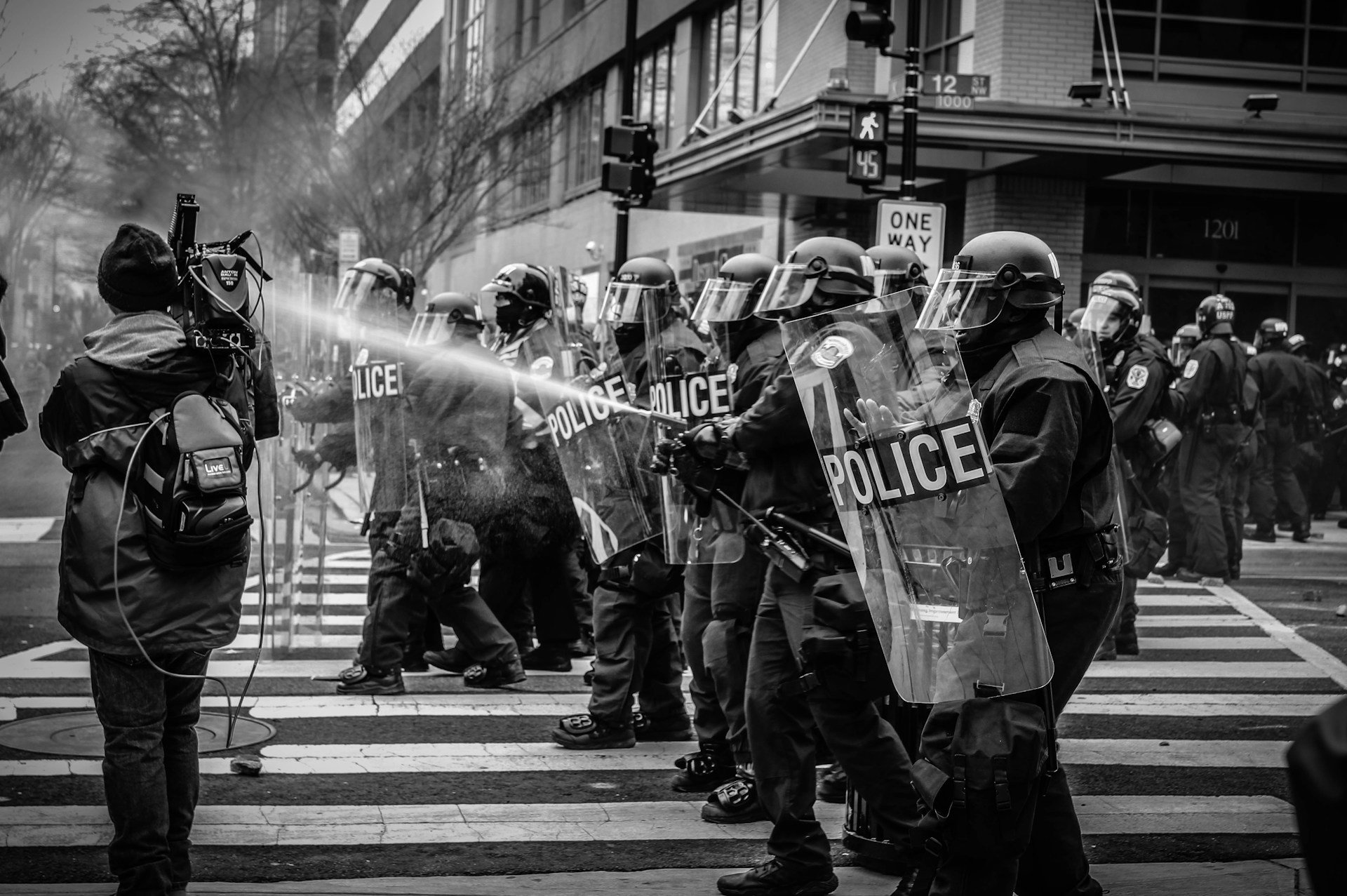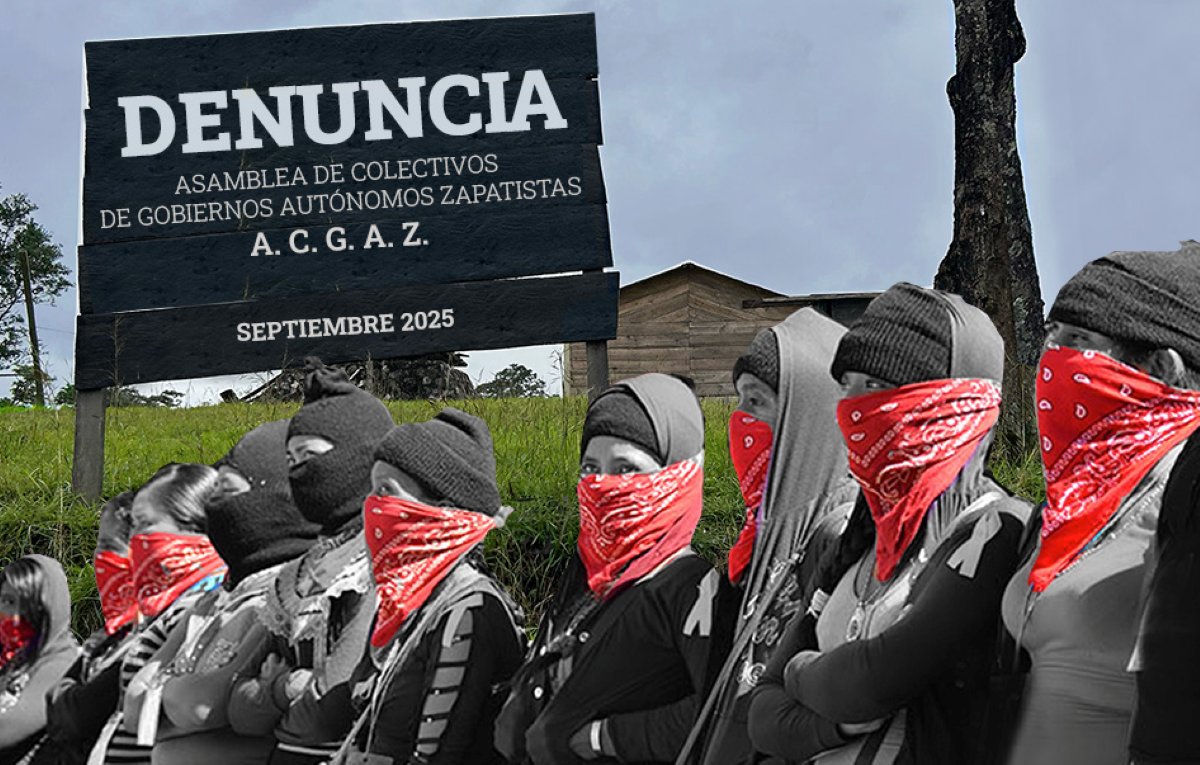Filed under: Editorials, Environment, Incarceration, US, White Supremacy

From Earth First! Newswire
by Panagioti Tsolkas and Nicholas Todd
Over the past month, two seemingly disparate issues of prisons and pipelines have captured the attention of activists and independent media across the country. On September 9, as a judge ruled to halt construction on the Dakota Access Pipeline (DAPL), prisoners around the country began a work strike coinciding with the anniversary of the famous Attica uprising. As we write, demonstrations are continuing nationwide to express solidarity with native tribes resisting the DAPL and for prisoners who launched a coordinated nationwide strike against slave labor in the American prison system.
Now, perhaps more than ever before, the spotlight is on the pushers of pipelines and prisons. Despite a void of coverage by mainstream outlets, social media is ablaze with independent articles covering these two topics. Pipeline opponents who’ve been amassing in North Dakota are now also looking south, as a state of emergency was declared after nearly 340,000 gallons of gas spilled in central Alabama from one of the region’s major pipelines; likewise, prisons in at least 11 states all across the country remain on lockdown in response to the strikes.
Just as the U.S. has the largest prison population in the world, with 25% of the world’s prisoners held in its 5000 detention facilities, it also has the world’s most vast network of energy pipelines, with more than 2.5 million miles of pipe which is reported to suffer hundreds of leaks and ruptures every year.
While battles around indigenous land rights have a long history of overlap with the environmental justice (EJ) movement, there is a developing body of research and activism placing prisoners’ rights in the EJ context as well, since prison populations in every state of the U.S. are populated disproportionately by people of color. Only establishing common ground over the conventional concept of “environmental” angles surrounding these issues offers too shallow of an analysis; deeper solidarity requires understanding the bigger picture: the history of a social ecosystem surrounding broken treaties and toxic prisons alike. Doing so can only increase the effectiveness and long term success of struggles to defend the Earth.
At first glance, drawing a relationship between struggles surrounding prisons and pipelines may seem a stretch, but 45 years ago, activists were readily making these connections. Organizations like the American Indian Movement (AIM) and the Black Panther Party arose and co-existed in a very similar setting. Their bold direct actions inspired the solidarity of many people outside their respective communities as well. One example being activist-attorney William Kunslter, with the National Lawyers Guild, who went from negotiating on the side of the predominately Black prisoners of Attica to representing AIM members after the Wounded Knee stand-off at Pine Ridge. Activists today must know this history and continue to build on this tradition.
From Attica to Wounded Knee
Just as Michelle Alexander’s book The New Jim Crow has outlined the ways in which the prison system acted as retaliation against Black people, with population spikes paralleling slavery abolition and the passing of Civil Rights legislation 100 years later, incarceration—and the threat of incarceration—among American Indians has also served the role of mass repression throughout the process of colonization and industrial expansion.
In fact, recent studies on the racial breakdown of incarceration and criminal punishment show Native Americans to be among the most over-represented demographic in U.S. jails and prisons. Yet, a report by Quarts last year on the “reservation to prison” pipeline indicated that, compared to other similarly disenfranchised groups, media reportage and scholarly analyses of these issues are few and far between.
- Native Americans are incarcerated at a rate 38% higher than the national average, according to the Bureau of Justice Statistics (BJS).
- Native American youths are 30% more likely than whites to be referred to juvenile court than have charges dropped, according to National Council on Crime and Delinquency.
- Native Americans are more likely to be killed by police than any other racial group, according to the Center on Juvenile and Criminal Justice.
- Native American men are incarcerated at four times the rate of white men; Native American women are incarcerated at six times the rate of white women, according to a report compiled by the Lakota People’s Law Project.
- Native Americans fall victim to violent crime at more than double the rate of all other US citizens, according to BJS reports. Eighty-eight percent of violent crime committed against Native American women is carried out by non-Native perpetrators.
Native activist and prisoner Robert A. Horse founded the organization Maza Tipi Oyate (Iron House Nation) in response to these staggering statistics. “My ancestors never experienced incarceration amongst our tribes, so the name Iron House was created to give a name to this new doctrine of western thought,” writes Horse.
The case of Lakota political prisoner Leonard Peltier, stands as a tragic symbol of this reservation to prison pipeline. Peltier has been locked up for four decades, often in solitary confinement, as a result of the 1973 stand-off at Wounded Knee on the Pine Ridge Indian Reservation. Wounded Knee is around 200 miles south of the Standing Rock Reservation, which straddles the border of North and South Dakota. This whole region is the territory of the Lakota Nation.
The Pine Ridge Reservation is referred to as Prisoner of War Camp 334 in U.S. military records.
The simultaneous uprisings of prisoners ala Attica ‘71 and indigenous people ala Wounded Knee ’73 is not a simple coincidence. It is an indication that we are part of a continuing push-back against the same system that was being protested 50 years ago, and 500 years ago, from prisons to pipelines.
From Five Decades to Five Centuries
Venturing back a few centuries further into the history of this continent, the intersections become even clearer. First off, the initial colonial settlements in this hemisphere rapidly doubled as prison towns for the repression of native populations, who generally began resisting invasion at their first glimpse of industrialized slavery. The sooner the people were cleared off the land, the sooner the land could be cleared for profit-making off slave labor and resource extraction.
For over 500 years, European monarchies and governments have endeavored in genocide against the indigenous residents of the Western Hemisphere to control the land and a global slave trade to control the labor. What’s happening at Standing Rock, and at prisons across the country, is evidence that genocide and slavery still work hand-in-hand today.
The U.S. government is left facing the fact that it inherited the legacy of domestic slavery, where over a dozen generations of slavery have left the deep wounds of racism and persistent poverty, and, similar to the indigenous nations, an inclination to rebel.
Since the tumultuous ’60s and ’70s, renowned for liberation movements from Black, Indigenous, and other marginalized communities, prison populations spiked 700-percent. In essence, this has kept slavery alive and well, cultivating a system where prisoners still pick cotton and cut sugar cane at gun point.
Today, in the 21st Century, the language of Manifest Destiny has been rebranded as “Job Creation.” Just as politicians tell us that a prison jobs rehabilitate prisoners, they tell us that constructing DAPL is helping the economy. And in Kentucky, a new federal prison will alleviate unemployment in the Appalachian coalfields. But we know better: pipelines are the extension of genocide; prisons are the extension of slavery.
The First Wave of Colonialism
There’s been a popular myth Europeans told themselves as they began to colonize the Americas—a myth so powerful that it still masquerades as scientific and historical fact in most classrooms. The myth describes the Western Hemisphere as a sparsely populated wilderness, under-utilized and almost awaiting industrialization. Charles C. Mann and other historians are beginning to refute this myth with evidence of a North America heavily populated, dense with cities as large as those in Europe at the time.
As Europeans caused the extinction of many eastern indigenous populations, tribes in the center of the continent began to prepare for European migration. Four hundred years after the first encounter with Columbus, in 1868, Red Cloud’s War forced a definitive moment in the history of European expansion and indigenous rights. The Lakota, Cheyenne, and Arapaho united to combat gold miners and their military escort. This resistance defeated the United States forces and brokered an agreement, The Treaty of Fort Laramie.
The significance of this treaty is immeasurable. This treaty is a cornerstone of tribal sovereignty and the legal recognition of tribal ownership of land. Lakota student activists living in California would later use the treaty in California during the occupations of the former prison island of Alcatraz of the ’60s, as it called for any federal surplus land to be given over to Lakota control. Unfortunately, the treaty was full of wording about “ensuring civilization” and “conditional ownership.” This legal double-speak was further fortified through the Dawes Act of 1887. The Dawes Act included this mission: “introduce among the Indians the customs and pursuits of civilized life and gradually absorb them into the mass of our citizens.”
This makes it clear: While the United States was forced to establish and recognize the legal sovereignty of the plains tribes, they had no intention of honoring that sovereignty.
All this is to say that what began with Custer’s Army Cavalry Corps is now being carried out by the Army Corps of Engineers near Cannonball, North Dakota.
Transatlantic Origins of Prison Slavery
In a parallel time period begins the legacy of chattel slavery on the North American continent. Between 1525 and 1866, according to the Trans-Atlantic Slave Trade Database, 12.5 million Africans were shipped to the New World, about 10.7 million survived the Middle Passage, and around 450,000 eventually landed in what would become the U.S. When the Civil War began, about 4 million people lived as slaves in the land of the free.
As Imara Jones, writer for Colorlines, points out, “The massive infrastructure required to move 8 to 10 million Africans halfway around the world built entire cities in England and France…. The industry to construct, fund, staff, and administer the thousands of ships which made close to 50,000 individual voyages was alone a herculean task. The international financial and distribution networks required to coordinate, maintain and profit from slavery set the framework for the modern global economy.”
While the U.S. Civil War is often referred to as a war between agricultural slavery and modern industrialism, it was more so the process of evolving an industrial economy. Chattel slavery arose from an industrial farming model that aimed to maximize the use of the land that had been recently stolen from Native Americans the century earlier. And while the Civil War is credited with ending slavery, it was centuries of slave revolts and the growth of a multiracial abolition movement that forced the “peculiar institution” into the dustbin, at least in name.
Just two years after the Emancipation Proclamation announced the end of chattel slavery in the South, Red Cloud’s War secured the brokering of the 1868 Fort Laramie treaty out West. These events were not coincidental showings of faith and goodwill by a unified, benevolent U.S. government. They were the result of building pressure, the sustained direct action campaigns of their times.
By the time that the 13 Amendment to the U.S. Constitution was ratified in the 1860s, the groundwork for mass incarceration had been laid, essentially as retaliation for abolishing slavery.
The system of convict leasing began immediately during the Reconstruction period, and supposedly ended in 1928, with the last official holdout being Alabama (the birthplace of this year’s Sept 9th prisoner strike.) It persisted in various forms until it was also allegedly abolished in 1942. This system allowed contractors to purchase the services of convicts from the state or local governments for a specific time period. Under Jim Crow, African Americans, of course, made up the vast majority of the convicts leased.
So what’s different about convict leasing and modern prison labor? Nothing, really. Over the decades, prison labor has actually expanded in scope and reach. Along with running the prisons, Incarcerated workers are forced into mining, agriculture, and all manner of manufacturing from making military weapons and furniture for government offices to scrubbing labels off Wal-Mart’s returned products, sewing garments for Victoria’s Secret, and even manufacturing solar panels, in prisons all across the country. To this day, prison populations in Southern states still have the reputation of being the most overcrowded, brutal and corrupt.
From Then to Now
The easiest and most common response given to these historic atrocities is very similar to these present day atrocities (and the uprisings in response to them): “I don’t live then or there, I live here and now.”
But the simultaneous expansions of both mass incarceration and fossil fuel infrastructure—5000 prisons and 2.5 million miles of pipe—have mooted that philosophical escape route. As AIM founder Russell Means has pointed out, “The history of the Indian and the history of the American have now come full circle and we’re intertwined.” (Means passed away in 2012, but if he were here today, he would not likely have been shocked by reading a recent study released in the NY Times showing the most dramatic incline of prisoner populations right now is occurring among rural white people.)
When prisoners called for solidarity with their strike against slavery and white supremacy on September 9, even though the call came for a handful of specific prisons initially, it reportedly spread to at least 24 states, with an estimation of 20,000 prisoners participating and over 40 solidarity actions outside the prison walls.
Likewise, the Sacred Stone Camp blockading pipeline construction in North Dakota called for a day of action on Sept 13; more than 100 events in 35 U.S. states and at least five other countries, showed their support with the Standing Rock Sioux Tribe in its battle against the $3.78 billion Dakota Access Pipeline. Many of these included groups fighting in their own communities against pipelines, drilling and oil trains.
This is only a small fraction of the potential, as the chances of having a problematic prison and pipeline nearby you, wherever you are, are sadly very high. If you look close enough, the connections get far too close for comfort.
From There to Here
Last week, when we stood in front of the Coleman federal prison, located between the sprawl of Tampa and Orlando, with the Campaign to Fight Toxic Prisons and the IWW labor union’s Incarcerated Workers Organizing Committee. We arrived there with signs banners and bullhorns to offer our solidarity to people locked in the country’s largest federal prison factory (UNICOR) complex. The prison, which warehouses over 7,000 people, is the largest part of over $34 million in contract obligations coming out of federal prisons in Florida, with three times the output of any other state in the scandal-ridden UNICOR system.
It’s was no shock to learn that Coleman is surrounded by a vast wasteland of rock mining operations in rural Sumter County, an industrial activity with a record of creating giant toxic ponds across Florida. Prisons all over the country are coupled with environmentally hazardous land uses that threaten prisoner’s health and pollute waterways. Also, not a big surprise that there is a massive gas pipeline called Sabal Trail, breaking ground now, slated to pass within miles of the Coleman prison.
But this prison has more in common with the uprising occurring on Lakota land than a pipeline. Coleman is also the current residence of Leonard Peltier. While Peltier became one of the most famous political prisoners in the world, few seem to know that he was moved to Florida, 2,000 miles from his community back in 2011.
Sabal Trail is a being constructed by Spectra, an energy company owned by the same builders of DAPL. It’s slated to go from central Alabama to southern Florida, and despite a huge show of opposition during its environmental review, and now pending lawsuits, it would cross multiple rivers and springsheds all along the way. It’s rumored to break ground any day now in Sumter County.
As news of presidential election overshadows the vast majority of air time in the mainstream media, its created an undeniable blackout effect for both the prisoner strike and the DAPL blockade. In this context, it’s more critical than ever that we maintain attention to the places where social change is happening at the ground level; where the inspiration to use direct action is trumping a reliance on the ineffectual democracy of elite politicians. Defending our communities and shifting priorities in this society won’t come from a choice between Clinton or Trump, but it may grow out of the resistance occurring at pipeline construction sites and inside prisons around the country right now.
About the authors
Nick was born on the Pine Ridge Reservation in South Dakota, and has an intimate understanding of the history and the relevance of that history to the present day. He is also a former prisoner of the state of Colorado, and as a result became active with Maza Tipi Oyate, an organization of native prisoners. He currently lives in North Florida developing community garden programs and alternatives systems of education.
Panagioti is from a family of Greek immigrants, and has spent much of the past decade fighting pipelines, power plants and prisons. He is an organizer with the Campaign to Fight Toxic Prisons, co-founder of the Prison Ecology Project, former editorial collective member of the Earth First! Journal, and has worked closely with members of Seminole and Miccosukee communities in Florida. He has also experienced the criminal justice system first-hand in over a dozen county jails around the country.





